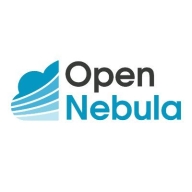

CloudSphere and OpenNebula are cloud management platforms vying in the competitive cloud management category. CloudSphere holds an edge in pricing and customer support satisfaction, while OpenNebula is favored for its advanced features and perceived value.
Features: CloudSphere offers multi-cloud governance, compliance automation, and robust policy management. OpenNebula stands out with its virtualization abilities, hybrid cloud orchestration, and extensive template configurations.
Room for Improvement: CloudSphere could enhance its interface simplicity, reduce dependency latency, and improve integration with more cloud platforms. OpenNebula may need better user-friendly documentation, simplified initial setup processes for non-experts, and expansion of its support services.
Ease of Deployment and Customer Service: CloudSphere ensures a streamlined deployment process complemented by strong customer support, aiding in quick initial setup. OpenNebula, while customizable and rapid in deployment, demands technical expertise for its configuration, appealing to users who prefer flexibility over simplicity.
Pricing and ROI: CloudSphere's competitive cost structure ensures a quicker ROI by mitigating compliance expenses. OpenNebula's pricing offers sustained ROI through its feature-rich setup that boosts long-term infrastructure adaptability.
| Product | Market Share (%) |
|---|---|
| OpenNebula | 5.7% |
| CloudSphere | 1.0% |
| Other | 93.3% |


| Company Size | Count |
|---|---|
| Small Business | 7 |
| Midsize Enterprise | 6 |
| Large Enterprise | 3 |
CloudSphere is an intelligent cloud management platform that enables organizations to plan, optimize, secure, and scale their cloud adoption. The platform has three solutions to help organizations manage dynamic, multi-cloud environments, including cloud migration planning, cloud cost management, and cloud security posture management. By using application intelligence (AI), the platform is able to discover and collect all of the data points that collectively define an application across on-premises, hybrid, and cloud environments. Because the solution is very scalable, it can accommodate companies of all sizes.
The CloudSphere solution is ideal for:
CloudSphere Product Highlights
CloudSphere Features
CloudSphere has many valuable key features. Some of the most useful ones include:
CloudSphere Benefits
There are many benefits to implementing CloudSphere. Some of the biggest advantages the solution offers include:
OpenNebula provides the most simple but feature-rich and flexible solution for the comprehensive management of virtualized data centers to enable private, public and hybrid IaaS clouds. OpenNebula interoperability makes cloud an evolution by leveraging existing IT assets, protecting your investments, and avoiding vendor lock-in.
OpenNebula is a turnkey enterprise-ready solution that includes all the features needed to provide an on-premises (private) cloud offering, and to offer public cloud services.
We monitor all Cloud Management reviews to prevent fraudulent reviews and keep review quality high. We do not post reviews by company employees or direct competitors. We validate each review for authenticity via cross-reference with LinkedIn, and personal follow-up with the reviewer when necessary.